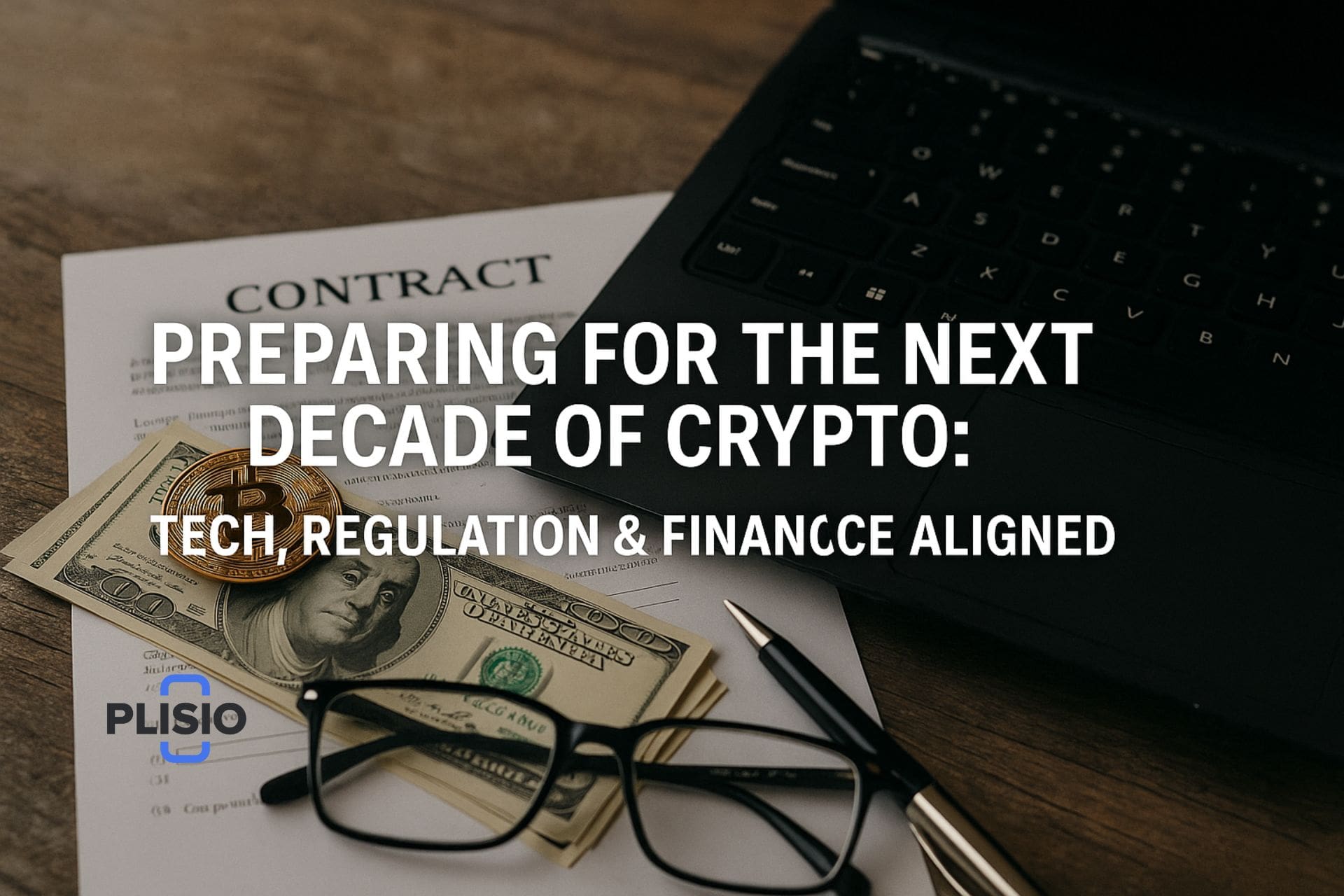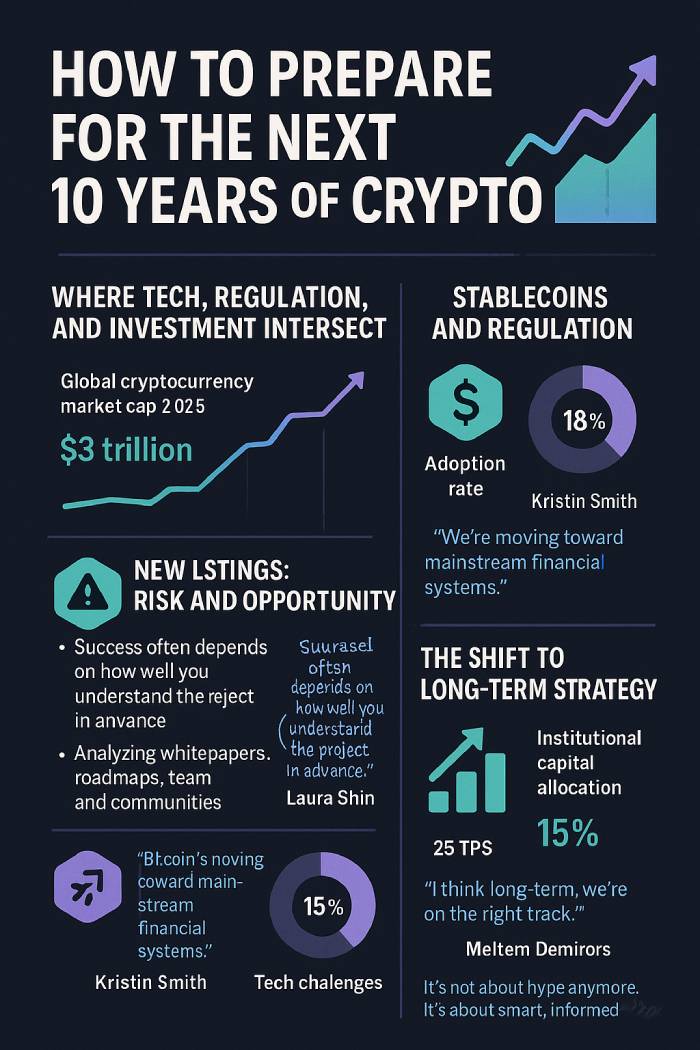How to Get Ready for the Next 10 Years of Crypto: Where Technology, Rules, and Money Come Together

The crypto market is always changing quickly, and as new coins come out on exchanges, they generally promise high returns but also a lot of volatility. That's why it's so important to prepare ahead in a thoughtful way. When a token first comes out, liquidity can change quickly, and investor mood can make values go up or down. How thoroughly you understand the project ahead of time often determines how well it goes.
There are a lot of important things that can help you guess how well a cryptocurrency will do in the long term. These include the whitepaper's trustworthiness, the development team's background, and the community's degree of participation. Recently, we've seen a lot of innovative tokens that combine cryptocurrencies with new technologies like AI, DeFi, and the metaverse. This means that it's much more vital to look at new assets in a structural way before getting involved.
In this situation, knowing how to judge new coins isn't just useful; it's also a useful guide for navigating the unpredictable world of crypto investing.
Laura Shin, a crypto expert, says, "Retail investors are no longer just speculators; they're becoming researchers." People that take the time to learn the basics of a project are getting better returns over time.
Stablecoins and Rules: A Look at What's Coming Up
In the next ten years, crypto will probably fully enter the mainstream banking system. For instance, stablecoins are becoming more popular as ways to pay for things around the world. Still, they aren't used very often. In South Korea, though, stablecoins are starting to be used for more than just trading. People are using them to pay for things and even send money to one other.
According to new data from the Bank of Korea, stablecoin trading volume on Korea's top five exchanges reached almost 61.2 trillion KRW (about $47 billion) between January and March 2025. USDT made up 79.5% of the amount.
CoinMetrics says that the stablecoin market cap surpassed $170 billion in the second quarter of 2025, with USDC and USDT being the most popular. JPMorgan, on the other hand, thinks that less than 8% of all stablecoin volume is now being used for real payments. Most of it is still being used for speculation or arbitrage.
Kristin Smith, CEO of the Blockchain Association, says, "Regulation is no longer the enemy of innovation." With the correct framework, digital assets become more legitimate and can be used in the real world, especially stablecoins.
That being said, more rules are making the crypto business more stable and trustworthy. Countries including the U.S., South Korea, and countries in Europe are working hard to make rules for stablecoins and are even starting to use central bank digital currencies (CBDCs). These efforts show that in the future, digital assets won't just be investments that people make for fun; they'll be a part of the real financial system.

Problems with technology and trust in institutions
Bitcoin's current processing speed of only 3 to 7 transactions per second isn't fast enough for a lot of people to use it. Developers are working on tech improvements like the Lightning Network, proof-of-stake systems, and even cryptography that works after quantum computers. If crypto is going to become really popular in the next ten years, these problems need to be fixed.
Based on data from L2Beat, Ethereum's scalability has also improved. Layer 2 solutions like Optimism and Arbitrum will cut transaction costs by up to 90% in 2025.
There is still a lot of trust in institutions. Michael Saylor's company, MicroStrategy, bought 6,210 more BTC in the second quarter of 2025, bringing its total holdings to more than 612,000 BTC. Based on the price of Bitcoin in July 2025, which was $117,400, their unrealized gain is now more than $25 billion. This shift shows how Bitcoin is becoming more and more like "digital gold" in institutional portfolios.
Cathie Wood, CEO of ARK Invest, stated, "We're not asking if institutions will get into crypto anymore; we're asking how quickly they'll grow their positions." "The infrastructure is getting closer to what investors want."
The Move to Long-Term Planning
People who invest are also changing how they feel. People don't just perceive crypto as a short-term bet anymore. Ric Edelman, a well-known financial expert, has said that crypto may make up 10% to 40% of a portfolio. This is a major change from his previous advice, which said that crypto should only make up 1% of a portfolio. This shows that systematic, long-term investing is becoming more important.
Bitcoin itself is hitting new highs, going above $115,000 in the middle of 2025 and maybe reaching $180,000 by the end of the year or even $220,000 by 2029. This is because of the 2024 halving and more ETF activity. BlackRock's spot Bitcoin ETF, which started in early 2024, currently has more than $18 billion in assets under management. This makes it one of the fastest-growing ETFs in the previous ten years.
Meltem Demirors, CSO of CoinShares, adds, "We're seeing a shift from reactive trading to proactive portfolio design." "Crypto is making a name for itself as a strategic investment."
Tokens that have just been listed still have risks, but they also have chances. You can get an edge by doing a lot of research, such as reading the whitepaper, tokenomics, roadmap, team, and community. This kind of early introduction could be the start of making money for a long time, like 10 years.
But there are actual risks: not having enough knowledge, using experimental technology, or having weak communities can all contribute to failure. That's why it's more crucial than ever to analyze data well and plan ahead.
The Road to Maturity and Global Trends
Regulators all across the world are trying to make the crypto world safer and more reliable. In early 2025, the U.S. House of Representatives enacted the Stablecoin TRUST Act. At the same time, South Korea's Financial Services Commission worked with private fintech companies to test a KRW-backed stablecoin.
The SEC is now looking at spot ETFs for Ethereum and Solana. This means that more institutions will be able to acquire a wider spectrum of digital assets. These actions are helpful to build trust between firms, institutions, and individual investors.
Hester Peirce, a commissioner at the U.S. SEC Gen. "We're entering log on to the era where digital fen and risk standards are expected to be met by digital assets." "That's not a problem; it's a chance."
Three things will shape the future of crypto: technology, rules, and money. For crypto to really become popular, all three of these things need to flourish at the same time. Investors should stop making fast trades and start doing in-depth research and planning for the long term.
Cryptocurrencies are becoming more stable and adaptable as more institutional money flows into the market and laws become clearer. If you learn how to evaluate new tokens today, you'll be ready to do well tomorrow.
Cryptocurrency isn't simply a fad; it's becoming a new way to handle money. As we progress toward a future influenced by new ideas, rules, and long-term plans, knowing how to evaluate new coinage will help you. It's not about the buzz anymore. It's about making decisions that are wise, well-informed, and fair.
Final Thoughts
In the years to come, knowledge and readiness will be more important than guesswork. If you want to be an investor, developer, or business owner, you need to know how crypto technology, global regulation, and investment behavior affect each other. To stay ahead, you need to keep learning, be cautiously optimistic, and be open to change. The next ten years of crypto will bring not just risk, but also amazing opportunities for those who are ready to accept this change.




